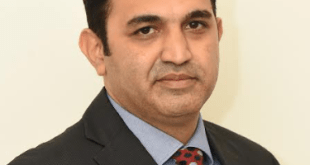Every year in India, thousands of lives are altered by oral cancers, some that might have been prevented. As caregivers and health practitioners, we often focus on tobacco, alcohol, or diet as the causes. Yet an unexpected culprit is gaining ground: human papillomavirus (HPV). While HPV is better known for its role in cervical cancer, its link to cancers of the mouth and throat is increasingly clear. This article explains how HPV contributes to oral cancers and why vaccination offers a powerful, hopeful route to prevention.
What Is HPV and How Does It Relate to Oral Cancer?
HPV (human papillomavirus) is a group of more than 200 viruses, some transmitted through intimate contact. While many infections resolve on their own, certain “high-risk” types, especially HPV-16 and HPV-18, can set off changes in cells that lead to cancer.
In the context of the throat, the oropharynx (base of the tongue, tonsils, back of throat) is especially vulnerable. Research shows that in India, HPV contributes significantly to head and neck cancers. Globally, HPV is estimated to cause a large share of oropharyngeal cancers.
In India’s cancer registries, about 63 % of HPV-related cancers in men are oropharyngeal in origin, making it a leading site of HPV-linked malignancy. HPV’s role in oral cancers may be underrecognized, partly because traditional risk factors like tobacco use still dominate public awareness.
Risk Factors for HPV-Related Oral Cancer
- Tobacco and alcohol: These irritate tissues, weaken local immunity, and make HPV’s effects more likely to progress.
- Immunosuppression and genetics: Weakened immunity (e.g. HIV) or genetic susceptibility can hinder viral clearance and allow malignant changes.
- Sexual behaviours: Engaging in oral sex or having multiple partners increases risk of HPV exposure in the oral cavity.
Thus, HPV acts in concert with behavioural and biological factors to raise the odds of cancer.
The Role of HPV Vaccination in Prevention
Vaccination is the one tool that can block new HPV infections before they take hold, and once infection is prevented, downstream cancers can be avoided.
In India, vaccines targeting HPV-16 and HPV-18 have shown excellent efficacy in preventing persistent infection (over 95 % in some studies) and precancerous changes. While most data focus on cervical infection, evidence is mounting that vaccination also reduces oral HPV infection rates.
Vaccination is ideally given before exposure to HPV (for instance between ages 9 and 12). Both girls and boys’ benefit, vaccination of boys helps reduce transmission and directly protects them against HPV-associated oral cancers. In India, initiation of vaccination programs has been slow, though newer indigenous vaccines may ease cost and access barriers.
Many countries now allow “catch-up” vaccination for older adolescents or young adults; India’s national immunisation advisory bodies have recommended HPV inclusion in immunisation schedules, though widespread rollout is still underway.
Common Misconceptions About HPV Vaccination
- “HPV vaccine is only for cervical cancer.” While its impact on cervical cancer is well known, HPV causes other cancers too, especially in the head and neck region.
- “Vaccine safety is unproven.”Decades of data affirm its safety. Side effects tend to be mild (e.g. soreness, mild fever).
- “Giving the vaccine encourages early sexual activity.”Studies show no increase in risky behaviour following vaccination.
By addressing these misconceptions clearly, caregivers, schools, and health workers can build trust and acceptance.
Impact of Vaccination on Public Health
When vaccination becomes widespread, oral cancer rates may fall over years. Modelling suggests that early, broad HPV vaccination could reduce future oropharyngeal cancer incidence markedly.
Vaccination is cost-effective: prevented cancers reduce the need for expensive, complex treatments later. In a resource-stretched health system, prevention yields large dividends. Alongside regular screenings and tobacco control, HPV vaccination becomes a cornerstone of comprehensive cancer prevention.
What More Can Be Done?
- Raise awarenessamong parents, caregivers, and adolescents about HPV’s role beyond cervical cancer.
- Integrate vaccination into school and public health programs, offering it free or subsidised to reach more young people.
- Encourage regular oral cancer screenings, especially for those with risk factors, vaccination does not replace vigilance.
A Call to Protect the Next Generation: Make HPV Vaccination a National Priority
HPV vaccination goes far beyond protecting women from cervical cancer, it is a vital shield against a growing threat of oral and throat cancers that affect both men and women. For a country like India, where oral cancer remains among the top three cancers, prevention must take precedence over cure. Every vaccine administered today is a step toward a future with fewer lives disrupted by preventable cancers. It’s time for caregivers, parents, and policymakers to act collectively, make HPV vaccination a routine, not a choice, and safeguard the next generation from a silent but preventable disease.
 Newspatrolling.com News cum Content Syndication Portal Online
Newspatrolling.com News cum Content Syndication Portal Online







